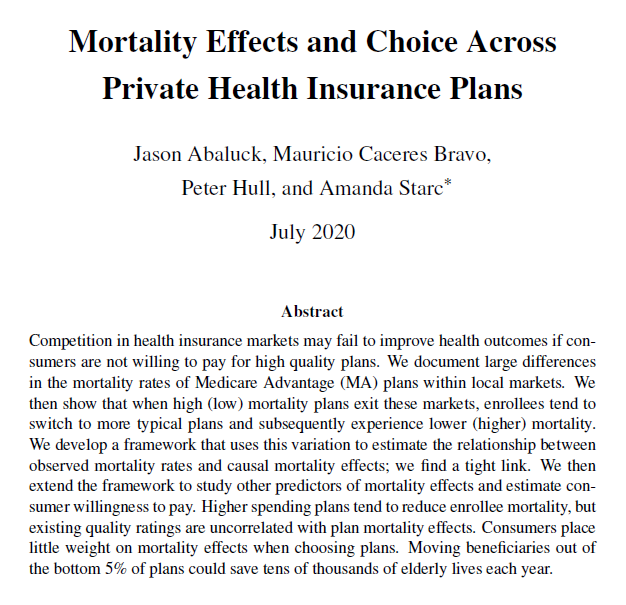
a) CMS should release risk-adjusted mortality info
b) CMS should pay for risk-adjusted mortality rather than star ratings
c) CMS should audit bad plans
d) Integrate health insurance and life insurance (@SVNieuwerburgh and @robinhanson)

Keep Current with Jason Abaluck
This Thread may be Removed Anytime!
Twitter may remove this content at anytime, convert it as a PDF, save and print for later use!

1) Follow Thread Reader App on Twitter so you can easily mention us!
2) Go to a Twitter thread (series of Tweets by the same owner) and mention us with a keyword "unroll"
@threadreaderapp unroll
You can practice here first or read more on our help page!